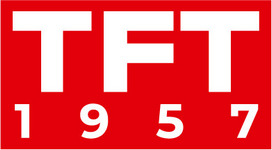-
Disguise and Move.ai: the partnership
-
Lawo HOME Apps: the server-based processing platform
Disguise and Move.ai: the partnership
Maria: Disguise and Move.ai are developing a custom AI technology based on real-time markerless motion capture software, Invisible. The integration of Invisible with the disguise platform aims to redefine real-time motion capture by removing the need for costly mocap suits. Philip, what does this mean for the industry?
Philip: One of the biggest issues in any of the AR/VR technologies is knowing where the people are and where the cameras are. Over the last few weeks, I’ve gone down the rabbit hole of AI technology to find that there seems to be an adaptation or adoption of the tech used in autopilot for automobiles because it has to sense what things are around. If they can pull this off, then it can become a product that reduces the complexity and simplifies how motion capture is done thereby speeding up the process. Because a lot of times you have to run this stuff through the computers, they also have to take things out to organize it, if they can do it with a very simple system, you pretty much can set this up in any room, any place without a large infrastructure, effectively opening up to the masses and making it available for people which can be a good thing because creative people who don’t have the resources to use this type of system can now do. The flip side is that creative people who shouldn’t use this kind of system and have no business using this type of system are going to make use of it. In general, it’s an appropriate use of AI technology.
Maria: Mary, I know you are more of an audio person but I am hoping you could comment on this or maybe with the AI trends, you’re seeing in audio if there are any?
Mary: We are starting to see some trends in audio but certainly not to this extent. It is exciting though because the lines between video and audio are blurring and in the audio industry, we are starting to use more video. I can see some applications for this down the road, we will need the video people to help us out with it though.
Lawo HOME Apps: the server-based processing platform
Maria: Lawo has announced its server-based processing platform consisting of scalable broadcast and media production apps and microservices. The first four HOME Apps — Multiviewer, UDX Conversion with HDR processing, Stream Transcoder and Graphic Inserter — also further widen the pool of functionality. So Philip, how will broadcasters benefit from this?
Philip: Full disclosure, I used to work for a company called Imagine Communications and we developed a product called the Selenio Network Processor which was a hardware-based solution that did this in the IP realm. It’s actually taking a bit longer than I thought for others to adopt this. Lawo who has been primarily an audio powerhouse has moved into the video and routing side. The fact that they’ve been able to adopt these technologies onto cot-based coming-off-the-shelf hardware and all software bases is very interesting. I haven’t done a lot of research into this solution but I would assume that there’s a lot of GPU-based stuff in there. However, it does start to show how we are simplifying our production solutions through less expensive off-the-shelf multipurpose hardware. So I’m excited to see this!
Maria: Mary, what are your thoughts?
Mary: This is really interesting. I was reading a lot on Lawo this week and one of the things they are always promoting is a kind of mix-and-match or Lego-type scenario where you can buy a server and add any of their solutions to it because they understand that it may not have an as long shelf life as it used to or be as flexible as they have the ability to be produced. And in the long run, it’s so much better for customers because for instance, when a power supply dies, if this is just a regular server, chances are that you’ll be able to get it back up.
Philip: Interestingly, a lot of this is made possible because of our conversion to IP that sticking to backup servers is no longer a special SDI cable; it could be NDI-based or SMPTE 2110. So it allows us to start to utilize cots-based software again. And as Mary said, it makes it a lot cheaper and easier as you don’t have to buy this purpose-built piece of hardware that you may only use three hours a day to do one thing, and now all of a sudden you could flip it with the software and it does something else for another two hours a day and you flip the software again so that it does something else for another three hours a day. So, it really optimizes the financial model for your organization.
Maria: That’s all the time we have today. Many thanks to our experts – Philip and Mary! And don’t forget to comment on the news we’ve discussed. See you next Monday at the same time! Goodbye!
Hosts Philip Grossman, Mary Ann Seidler, Maria Kholodova.
The live broadcast took place on April 10, 2023. Production – TKT1957 LLC, Georgia.
Media Partner – Cine Gear Expo

The program can be watched every Monday at 19:00 UTC+4 by clicking on any of these links:









